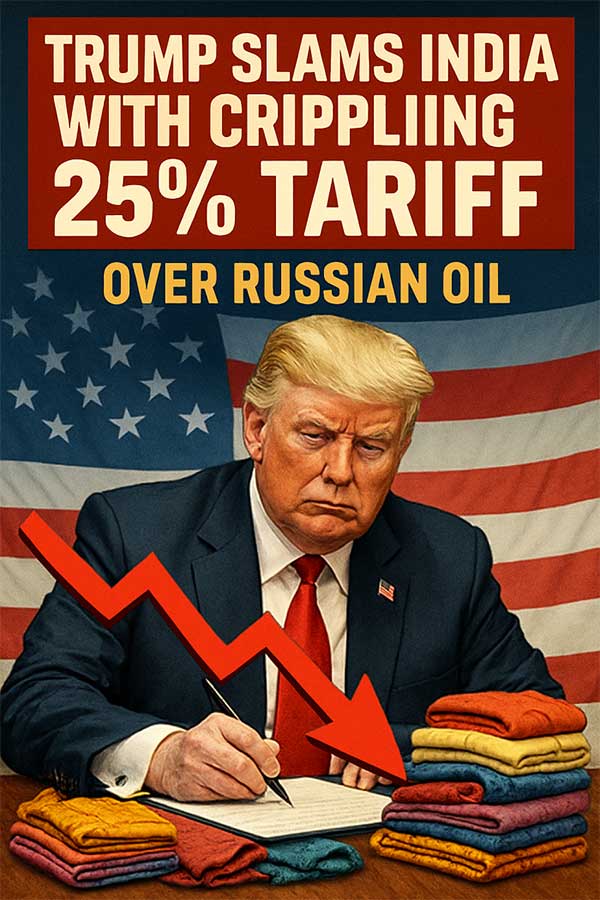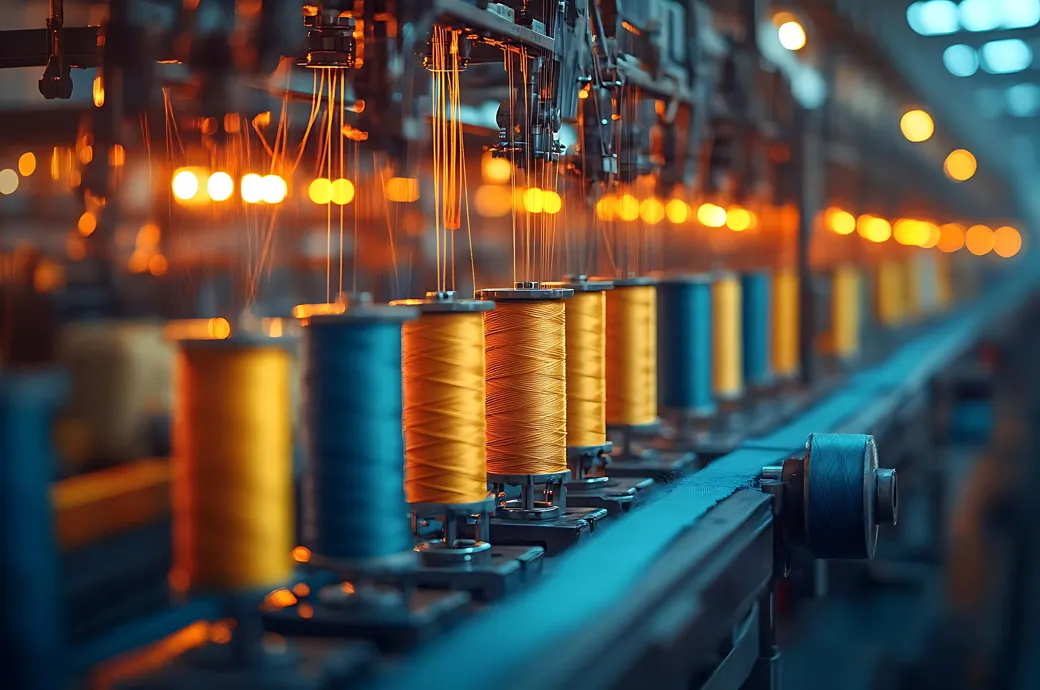
The United Kingdom is all set to rewrite the future of fashion waste. In a bold, future-facing move the country is preparing to launch a National Textile Recycling Hub — a game-changing infrastructure project that promises to curb the country’s textile waste crisis, revitalize regional economies, and anchor Britain’s fashion sector in circularity. At the heart of this transformation is a joint vision spearheaded by the UK Fashion & Textile Association (UKFT) and Circle-8, detailed in a comprehensive new report by Oxford Economics and backed by the Circular Fashion Innovation Network (CFIN).
With over one million tonnes of textiles discarded each year, the UK is Europe’s highest per capita clothing consumer. The proposed hub — anchored by three automated sorting facilities (ATSPs) and a dedicated chemical recycling plant — offers a systemic shift, aiming not just to reduce waste, but to recycle and reintegrate textiles into the fashion economy. More than an environmental win, the plan stands to unlock £53 million in annual GDP and support over 700 jobs nationwide.
Tackling the textile tsunami
The UK currently faces a major challenge with textile waste. As the European country with the highest per capita clothing purchases, over one million tonnes of used textiles are generated annually. Alarmingly, approximately one-third of this volume, deemed non-rewearable, ends up in incineration, landfill, or is exported for recycling in countries with lower labour costs. This not only poses a severe environmental threat but also carries a hefty economic burden, costing the UK economy an estimated £200 million per year in disposal fees.
The proposed national textile recycling hub offers a robust solution. Once fully operational by 2031, the three ATSPs are projected to pre-process nearly 150,000 tonnes of textile waste annually. This is a critical first step in the recycling process. These facilities will employ advanced automated sorting technologies to efficiently categorize textiles, separating them based on their material composition.
Following this pre-processing, 50,000 tonnes of the sorted textile waste will be directed to the accompanying chemical recycling plant in the East Midlands. Here, these materials will undergo a sophisticated chemical process to break them down into their constituent fibres, which can then be re-spun into new, high-quality clothing fibres. The remaining 100,000 tonnes of sorted material, while not suitable for chemical recycling, will be channeled towards alternative textile recycling methods, ensuring maximum resource utilization and minimizing waste.
This multi-stage process, from automated sorting to advanced chemical recycling, represents a significant leap forward from traditional, often manual, sorting methods. It promises to enhance efficiency, purity of recycled materials, and ultimately, the economic viability of textile recycling.
A boost for the economy
The economic benefits of this national textile recycling hub are substantial, spanning both its development and operational phases. The project requires a total investment of £277 million, with £58 million of this directly realized within the UK economy.
Development phase (2025-28)
During the three-year development phase, the project is expected to generate significant economic activity
|
Metric |
Direct (£2022m) |
Indirect (£2022m) |
Induced (£2022m) |
Total (£2022m) |
|
GVA |
20 |
13 |
13 |
46 |
|
Job Years |
220 |
220 |
190 |
620 |
|
Wages |
12 |
8.5 |
5.5 |
26 |
|
Taxes |
1.9 |
1.1 |
1 |
4 |
Source: Oxford Economics, Circle-8 (Note: May not sum due to rounding)
The manufacturing sector will reap the lion’s share, with 240 job years and a £22 million GVA contribution — largely due to facility fit-outs and equipment installation.
Operational phase (fully operational by 2031)
Once fully operational, the recycling hub will continue to deliver impressive economic returns:
|
Metric |
Direct (£2022m) |
Indirect (£2022m) |
Induced (£2022m) |
Total (£2022m) |
|
GVA |
26 |
15 |
12 |
53 |
|
Jobs |
340 |
210 |
170 |
720 |
|
Wages |
12 |
8.7 |
5.5 |
26 |
|
Taxes |
3.7 |
3.8 |
2.1 |
9.6 |
Source: Oxford Economics, Circle-8 (Note: May not sum due to rounding)
The hub is projected to directly support 340 jobs across the four sites, with an average annual wage of £35,300. Through indirect and induced channels, a further 380 jobs will be created across the national economy, bringing the total employment impact to 720 jobs. The annual GVA contribution to national GDP is estimated at £53 million, with a collective fiscal benefit to the UK Government Treasury of £9.6 million per year.
Recycling roots across Britain
The hub’s nationwide footprint ensures that its benefits are equitably distributed, with each facility serving as a micro-center of regional regeneration.
East Midlands: The heart of recycling innovation
The East Midlands is poised to receive the largest share of the economic impact, hosting both an ATSP and the chemical recycling facility. By 2030, once fully operational, the region is estimated to benefit significantly:
|
Metric |
Direct (£2022m) |
Indirect (£2022m) |
Induced (£2022m) |
Total (£2022m) |
|
GVA |
17 |
12 |
9.4 |
38 |
|
Jobs |
140 |
170 |
130 |
440 |
|
Wages |
4.9 |
7 |
4.3 |
16 |
Source: Oxford Economics, Circle-8 (Note: May not sum due to rounding)
North West: A growing hub for textile recycling
|
Metric |
Direct (£2022m) |
Indirect (£2022m) |
Induced (£2022m) |
Total (£2022m) |
|
GVA |
4.8 |
3.2 |
2.4 |
10 |
|
Jobs |
100 |
40 |
30 |
170 |
|
Wages |
3.5 |
1.7 |
1.1 |
6.4 |
Source: Oxford Economics, Circle-8 (Note: May not sum due to rounding)
The region is expected to see 170 jobs supported and a £10 million GVA contribution, highlighting the localized benefits of the recycling infrastructure.
South West: Embracing the circular economy
The South West will also host an ATSP, reaching full operational capacity by 2031, with notable economic impacts:
|
Metric |
Direct (£2022m) |
Indirect (£2022m) |
Induced (£2022m) |
Total (£2022m) |
|
GVA |
4.7 |
2.3 |
2.1 |
9.1 |
|
Jobs |
100 |
30 |
30 |
160 |
|
Wages |
3.5 |
1.2 |
0.9 |
5.6 |
Source: Oxford Economics, Circle-8 (Note: May not sum due to rounding)
The South West will benefit from 160 jobs and a £9.1 million GVA contribution, further demonstrating the widespread positive effects of the national hub.
Catalytic benefits and policy alignment
Beyond the quantifiable economic impacts, the national textile recycling hub aligns perfectly with the UK's green policy objectives and international commitments, such as those discussed at COP29. The fashion and textiles industry accounts for an estimated 8-10 per cent of global greenhouse gas emissions, making a transition to a circular economy imperative for achieving net-zero targets.
The hub is projected to facilitate an annual saving of over £24 million in combined landfill and incineration gate fees by 2028, a direct financial benefit stemming from reduced waste disposal. Furthermore, impending legislative changes, including the expansion of the UK Emissions Trading Scheme (ETS) to include energy from waste plants and a 22 per cent rise in landfill gate fees, will make textile recycling an even more economically attractive and environmentally responsible option.
This ambitious project positions the UK at the forefront of sustainable fashion innovation, ensuring it remains competitive and resilient in a global market increasingly prioritizing circularity. By adopting advanced recycling technologies and fostering domestic infrastructure, the UK is not only addressing its waste crisis but also cultivating a new era of green growth and job creation.











